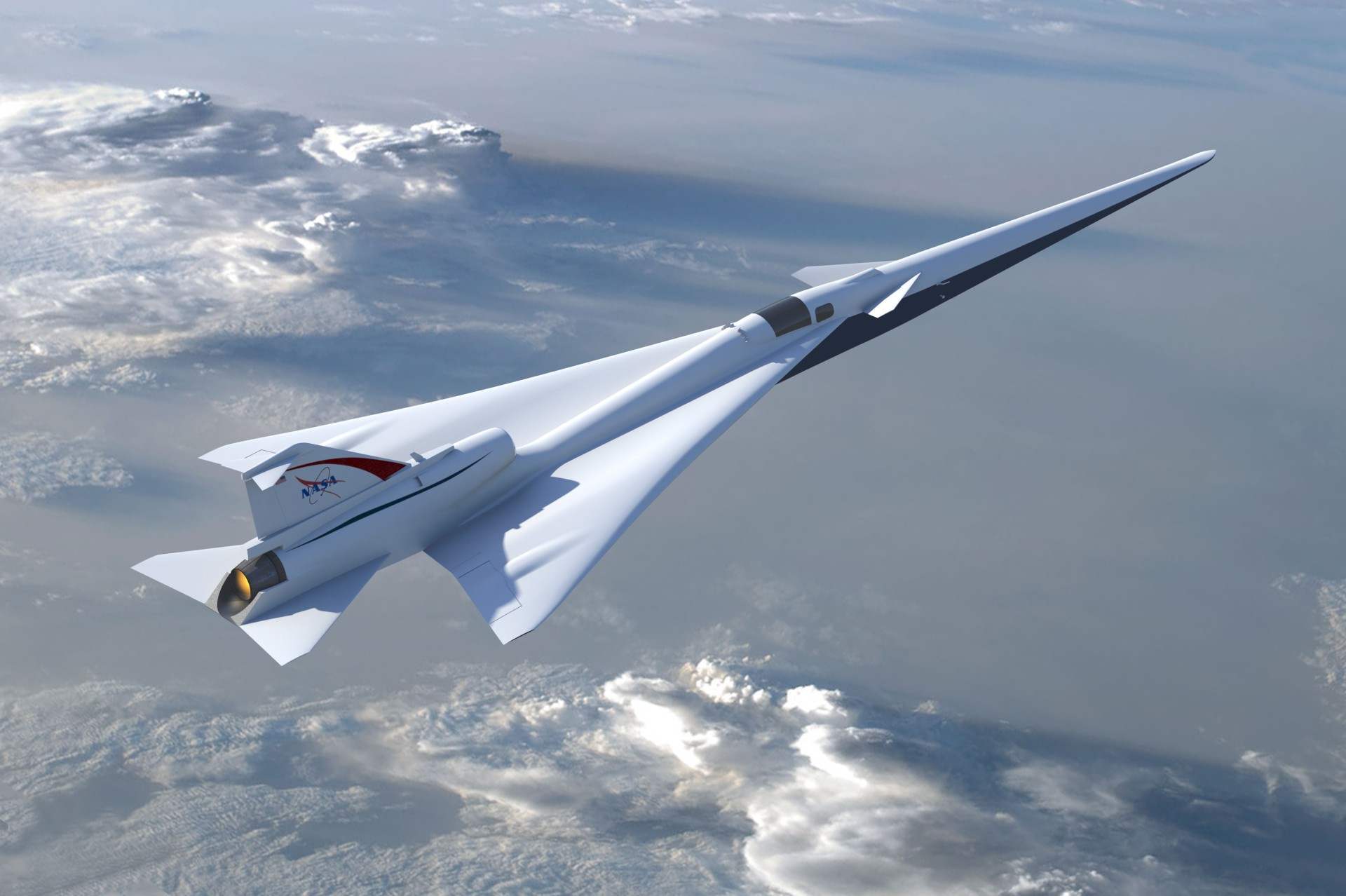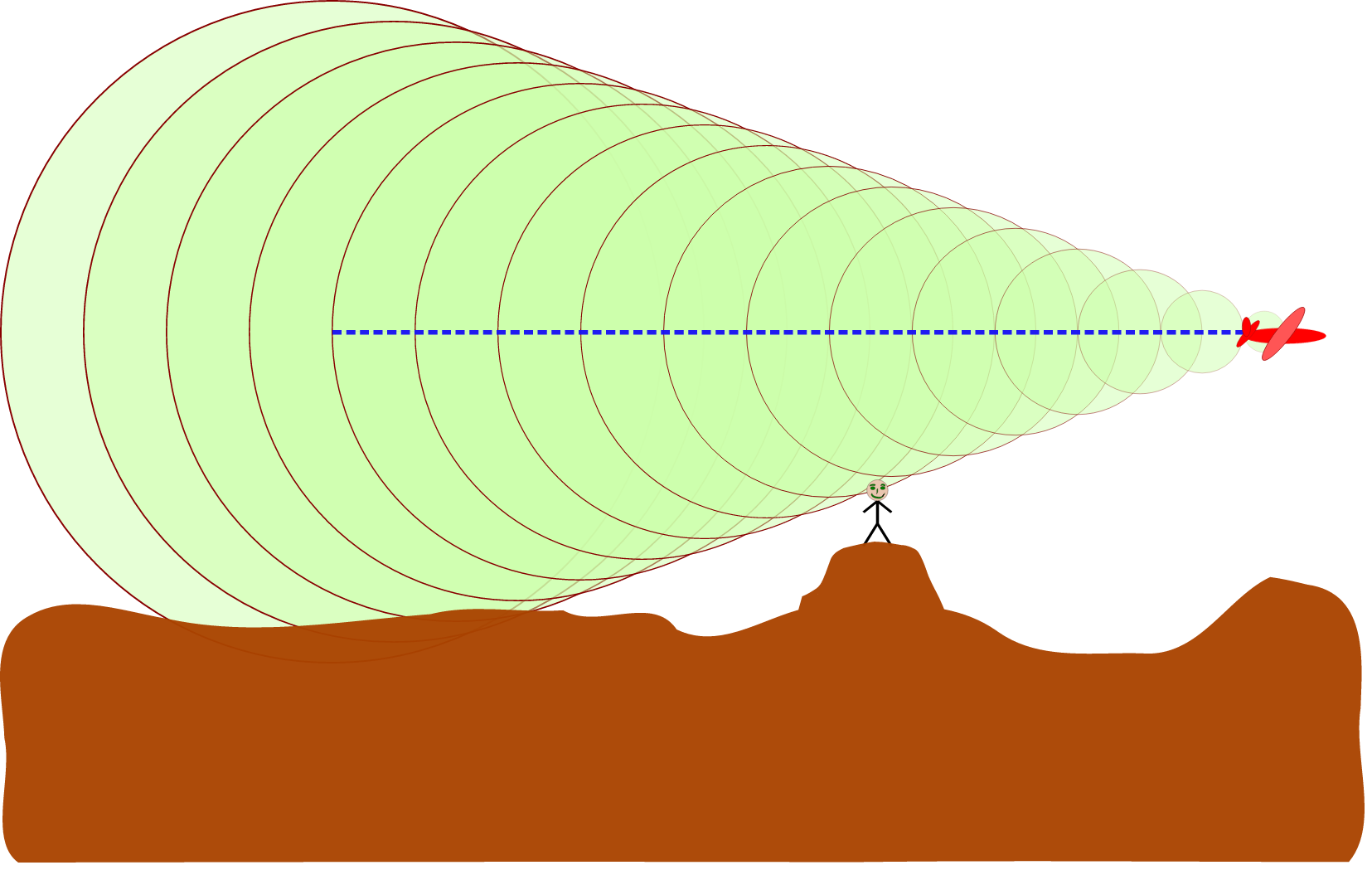 An illustration of a planned Low Boom Flight Demonstration aircraft, as presented in a preliminary design review last week. Illustration: NASA / Lockheed Martin
An illustration of a planned Low Boom Flight Demonstration aircraft, as presented in a preliminary design review last week. Illustration: NASA / Lockheed MartinNASA believes that it has reached an important milestone in the creation of a quiet supersonic passenger aircraft. Last week, a
preliminary design review stage (Preliminary Design Review) was completed for an aircraft known under the code name Quiet Supersonic Transport or QueSST.
QueSST is the first stage in the development of the experimental plane Low Boom Flight Demonstration (LBFD), which is included in the experimental development program of the X-plane.
On June 23, 2017, a panel of experts from different departments of NASA, as well as from Lockheed Martin Corporation, concluded that the QueSST design is able to meet the requirements of the preliminary design review and the tasks set by these innovative aircraft. His main task is to fly at supersonic speeds, but at the same time create a soft sound shock, rather than a
destructive shock wave , which is usually associated with super sound transport.
Attempts to launch a supersonic passenger aircraft have been undertaken for decades. The Soviet TU-144 proved to be an extremely unreliable vessel and was decommissioned. British-French "Concord" - the second supersonic passenger aircraft, which were in commercial use, along with the Tu-144. But there was another problem - too high fuel consumption and extremely loud noise, which residents of densely populated areas complained of over the plane. Even at a speed lower than the speed of sound, he created much more noise than a regular airliner.
The deafening sound of a shock wave accompanies the movement of any body at a speed greater than 1 Mach, that is, greater than the speed of sound in a given environment. The region of propagation of a shock wave from a supersonic aircraft is limited by
the Mach cone .

The Mach cone occurs when the body moves faster than the waves it generates. Most often they speak of a sound shock wave from an airplane that flies at a speed of more than 1 Mach, that is, greater than the speed of sound in a given environment. The propagation of a sound shock wave is an adiabatic process. This means that in air there is a jump in pressure, density, temperature and air velocity. The sound itself is a fluctuation of the density, velocity and pressure of the medium. The adiabatic process at supersonic speed is accompanied by a shock wave, which at a distance from the energy source degenerates into a sound wave, and its propagation velocity approaches the speed of sound.
Anyone who has heard the deafening sound of a shock wave will never want to hear it again. Due to its destructive nature, the field of application of supersonic civil aviation is limited. But QueSST will have such a mild sound impact that it will not cause much discomfort to the civilian population, engineers promise. And therefore LBFD can become a civilian supersonic airliner, which will be allowed such flights.
In the future, NASA plans to conduct flight tests, launching LBFD over cities and collecting data that regulators need to ultimately resolve supersonic passenger aircraft over residential areas in the United States and around the world.
Project manager for the development of commercial supersonic technology, Peter Coen (Peter Coen) explains in this
video that “the idea was to develop an aircraft so that the shock waves during supersonic flight were arranged in such a way that a stunning shock wave did not form. You will only feel a gradual increase in pressure, which produces a quiet sound. "
From February 2016, NASA engineers established a collaboration with one of the leading aerospace agency contractors, Lockheed Martin, to create a preliminary design for QueSST. In May 2017, the QueSST scale model completed tests in an aerospace tube measuring 2.4 × 1.8 meters at the NASA Research Center. John Glenn in Cleveland.
Of course, the creation of a real aircraft is still very far away, but innovative projects like this are a systematic movement from one key stage to another. And the approval of the preliminary design means that NASA has taken another important step along the way.
Now NASA can proceed to the tender, where contractors will be offered to build a manned version of the X-plane with one engine. The tender will be held later this year, and the contract is planned to be signed in early 2018. The competition will be completely open, and the preliminary design of QueSST and all technical characteristics will be shared with each qualified participant who will submit an application. If everything goes well, the first flight tests of the LBFD X-plane can begin in 2021.
In the meantime, in the next few months, NASA, along with Lockheed Martin, will finalize the final version of the preliminary design documentation. It will include the results of static tests of air intake characteristics (static inlet performance) and the results of previous tests in the low-speed wind tunnel of the Langley Research Center in Hampton.